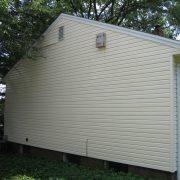12 safety tips to observe when power washing your walls.
When you are preparing your walls for painting, the first thing you need to do is to remove dirt that may have accumulated on them over the years. This is done by power washing. Failing to remove dirt from walls prior to painting will cause a fresh coat of paint to fail sooner than later.
Impurities removed from walls through power washing include dust, mildew, chalk, old paint and mud. Some power washers operate on gas while others operate on electricity. Electric power washers are more preferred since they have the ability to deliver more power.
Safety tips when using a power washer:
- Power washing should be done by skilled hands. Even if they are not difficult to operate, leaving them in the hands of an unskilled person can make them dangerous to people and property. The biggest challenge with handling one is in learning to use the right pressure.
- Power washers should not be pointed at other people. The pressure expressed by the power washer is extremely high, so just like a gun, you should not aim it at people especially when it’s discharging water.
- If you are working on a ladder, angle your ladder such that it will compensate for the ‘kick’ that comes when the water makes contact with a surface.
- Power washers should not be used around or near power sources, such as meter boxes, lights and sockets. Turn off the power before you begin and after you finish, check to ensure that no water leaked into any power sources.
- Power washers should be used with the right levels of pressure. A psi of between 1500 to 1800 can eliminate spider webs, grit, dust, dirt and fungus. For washing off loose paint, a force of 2500 psi will work. Anything higher and you’ll damage the walls.
- Note that wood sidings are especially vulnerable to power washing and the right level of pressure should be applied when working with wood.
- Before power washing, your house should be protected against the pressure blast. All windows and doors should be closed. If any windows and doors are leaky, extra caution should be applied when blasting around them.
- Make sure the pipe doesn’t get tangled during power washing. Remove all items that could be in the way, such as furniture or kids’ toys.
- Power washing should only be done on still days. If done on a windy day and you are up on a ladder, the combined force from the wind and water pressure could make you fall.
- Start power washing from the top of your walls and proceed vertically in a downward direction.
- Washing should always start with a low pressure and from a safe distance. Only increase pressure in small amounts and move closer to surfaces in small distances.
- A power washer should never be aimed at windows or doors.






